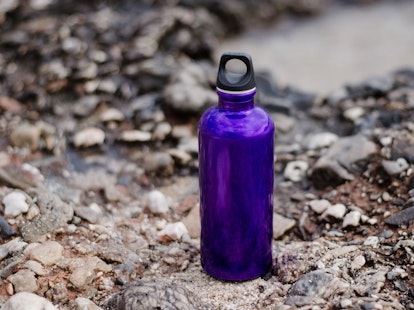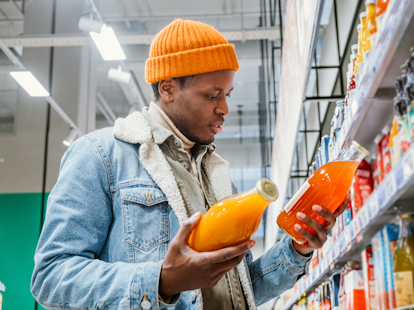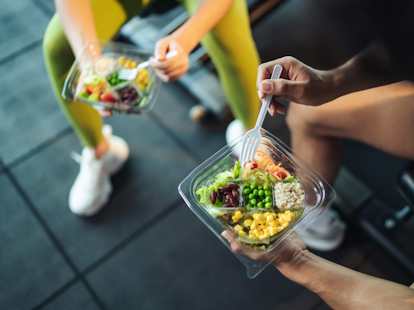The German Federal Institute for Risk Assessment (BfR) has issued three Recommendations for commodities made of rubber. These recommendations can be regarded as effective immediately.
In mid-2021, Germany’s Federal Institute for Risk Assessment (Bundesinstitut für Risikobewertung, BfR) published three interrelated Recommendations for natural and synthetic rubber commodities, including those that are intended to come into contact with food. These three Recommendations supersede BfR Recommendation XXI ‘Commodities based on natural and Synthetic Rubber’ of 2011.
According to the latest Recommendation XXI, a separate Recommendation XXI/3 ‘Consumer goods made of cross-linked thermoplastic elastomer’ is planned for food contact thermoplastic elastomers (TPEs).
Highlights of Recommendations XXI, XXI/1 and XX/2 are summarized below.
- Recommendation XXI ‘Commodities based on natural and synthetic rubber’
This Recommendation (in German or English) details the structure and procedure for the inclusion of new substances and definitions of terms, as well as providing an Annex listing the evaluated substances for the manufacture of goods according to Recommendations XXI/1 and XXI/2. This recommendation does not object to the use of natural and synthetic rubber and lattices made of such materials in the manufacture of goods provided the products are suitable for their intended purpose and compliant with the requirements falling under Recommendations XXI/1 and XXI/2. - Recommendation XXI/1 ‘Commodities based on natural and synthetic rubber in contact with food’
In this Recommendation (in German or English), food contact natural and synthetic rubber articles are classified into four categories according to their contact time (see Table 1 below for Categories 1 to 3). Category 4 commodities do not require testing for migration as transfer of constituents to food is not expected under the conditions of intended use. These include articles that only come into contact with food at temperatures up to room temperature and only for a very short time and/or only with a very small surface area and cannot be classified into categories 1 to 3.In addition to the recommendations indicated above, this guideline contains, inter alia, several important provisions:
- Testing migration for repeated use commodities
- Migration benchmark for ‘not detected’
- Migration values for closures in mg/kg, otherwise mg/item if the intended use of the item is unknown
- Substances for the manufacture of commodities from natural and synthetic rubber or from the corresponding lattices
- Starting materials, solid rubbers, rubber dispersions (lattices) as well as monomers, additives and production aids
- ≤ 10 mg/dm² (overall migration)
- ≤ 25 mg/kg zinc migration
- ≤ 1 mg/kg aluminum migration
- ≤ 0.01 mg/kg lead migration (not detected) – tests to be carried out in first migration
- ≤ 1.0 µg/dm² N-nitrosamines release in elastomers – tests to be carried in first migration
- ≤ 0.002 mg/L for primary aromatic amines (PAAs) classified as carcinogenic categories 1A and 1B under the CLP Regulation – tests to be carried in first migration
- ≤ 0.01 mg/L for PAAs – tests to be carried in first migration
- ≤ 3 mg/L formaldehyde
- Antimicrobial effect substances must not be used
- Recommendation XXI/2 ‘Special consumer goods made of natural and synthetic rubber and lattices made of natural and synthetic rubber (formerly special category)’
The scope in this Recommendation (in German or English) applies to three broad categories of consumer goods. Those that:
Federal Institute for Risk Assessment | |||
|---|---|---|---|
| Food contact consumer goods made of natural and synthetic rubber (when used as intended)* | |||
| Category | Category 1 (Long-term contact) | Category 2 (Medium-term contact) | Category 3 (Short-term contact) |
| Time in contact with food | More than 24 hours and up to several months | 24 hours maximum | 10 minutes maximum |
| Example of commodity | - Storage containers - Container linings - Sealing rings for cans, jars, bottles and similar items - Bottle stoppers and caps | - Sealing rings for pressure cookers, hoses for coffee machines - Lid seals e.g. for milk cans - Valve balls | - Gloves and aprons worn during processing of food - Roller covers for fatty food |
| Simulants | 1) deionized water, 2) 10% ethanol, 3) 20% ethanol, 4) 3% acetic acid, 5) 50% ethanol, 6) poly(2,6-diphneyl-p-phenylene oxide) particle size 60-80 mesh, pore size 200 nm and 7) vegetable oil with less than 1% unsaponifiable matter | ||
| Test conditions** for migration | 40 °C, 10 days*** | 40 °C, 24 hours | 40 °C, 10 mins |
*The extracts from categories 1, 2 and 3 commodities (articles and materials) must also comply, among other things, with the following: **Practical use test conditions must be adapted if actual conditions of use differ significantly from test conditions | |||
Table 1
- Come into contact with the human mucous membrane
- Come into contact with the human mucous membrane as well as food contact
- Come into contact with the human mucosa and are intended as toys for children under 36 months
Examples of the aforementioned goods include toys intended to be placed in the mouth or intended for children under 36 months, balloons, bottle teats, soothers (dummies), breast caps, teething rings and denture protection products.
This Recommendation contains, among other things, provisions for migration testing (see Table 2 below), substances for the manufacture of consumer goods from natural and synthetic rubber, starting materials, as well as additives and production aids. In addition to meeting the testing requirements in Table 2 below, finished goods must, inter alia, comply with the following:
- 60 mg/kg (overall migration)
- 25 mg/kg zinc migration from food or simulant
- ≤ 1 mg/kg aluminum migration from food or simulant
- ≤ 0.01 mg/kg lead migration (not detected) – tests to be carried out in first migration
- ≤ 0.002 mg/L for primary aromatic amines (PAAs) classified as carcinogenic categories 1A and 1B under the CLP Regulation
- ≤ 0.01 mg/L for PAAs
- ≤ 3 mg/L formaldehyde
- ≤ 10.0 µg/kg N-nitrosamines (not detected) for articles other than bottle teats, soothers, balloons and toys for children under 36 months which are intended or foreseeably placed in the mouth – tests are to be carried out according to No.6 under Annex 10 of the Consumer Goods Ordinance (Bedarfsgegenständeverordnung)
- ≤ 0.1 mg/kg N-nitrosatable substances (not detected) for articles as specified in Annex 4 to the Consumer Goods Ordinance (Bedarfsgegenständeverordnung)
- The release of N-nitrosamines and N-nitrosatable substances from teats is to be tested using DIN EN 12868
- The release of N-nitrosamines and N-nitrosatable substances from toys and balloons is to be tested using DIN EN 71-12 by taking the deviation in Annex C into account
- Antimicrobial effect substances must not be used
Click here to view the Federal Institute for Risk Assessment, Table 2
SGS is committed to providing information about development in regulations for consumer products as complimentary services. Through a global network of laboratories, SGS provides a wide range of services including physical/mechanical testing, analytical testing and consultancy work for technical and non-technical parameters applicable to a comprehensive range of consumer products. In the end, it’s only trusted because it’s tested. Contact us for more information or visit our website.
For inquiries, please contact:
Dr. Hingwo Tsang
Global Information and Innovation Manager
t: (+852) 2774 7420
© SGS Group Management SA - 2021 - All rights reserved - SGS is a registered trademark of SGS Group Management SA. This is a publication of SGS, except for 3rd parties’ contents submitted or licensed for use by SGS. SGS neither endorses nor disapproves said 3rd parties contents. This publication is intended to provide technical information and shall not be considered an exhaustive treatment of any subject treated. It is strictly educational and does not replace any legal requirements or applicable regulations. It is not intended to constitute consulting or professional advice. The information contained herein is provided “as is” and SGS does not warrant that it will be error-free or will meet any particular criteria of performance or quality. Do not quote or refer any information herein without SGS’s prior written consent.



